
(Tytonidae)
Barn Owls
Сипухові
The bird family Tytonidae, which includes the barn owls Tyto and the bay owls Phodilus, is one of the two families of owls, the other being the true owls or typical owls, Strigidae. They are medium to large owls with large heads and characteristic heart-shaped faces. They have long, strong legs with powerful talons. They also differ from the Strigidae in structural details relating in particular to the sternum and feet.
The main characteristic of the barn owls is the heart-shaped facial disc, formed by stiff feathers which serve to amplify and locate the source of sounds when hunting. Further adaptations in the wing feathers eliminate sound caused by flying, aiding both the hearing of the owl listening for hidden prey and keeping the prey unaware of the owl. Barn owls overall are darker on the back than the front, usually an orange-brown colour, the front being a paler version of the back or mottled, although considerable variation is seen even within species.
Bay owls closely resemble the Tyto owls, but have a divided facial disc, ear tufts, and tend to be smaller.
Hunting and feeding
Hunting in twilight or at night, the barn owl can target its prey and dive to the ground. Its legs and toes are long and slender, which improves its ability to forage among dense foliage or beneath the snow and gives it a wide spread of talons when attacking prey. This bird hunts by flying slowly, quartering the ground and hovering over spots that may conceal prey. It has long, broad wings that enable it to manoeuvre and turn abruptly. It has acute hearing, with ears placed asymmetrically, which improves detection of sound position and distance; the bird does not require sight to hunt. The facial disc helps with the bird’s hearing, as is shown by the fact that, with the ruff feathers removed, the bird can still determine a sound source’s direction, although without the disc it cannot determine the source’s height. It may perch on branches, fence posts, or other lookouts to scan its surroundings, and this is the main means of prey location in the oil palm plantations of Malaysia.
Rodents and other small mammals may constitute over ninety percent of the prey caught. Birds are also taken, as well as lizards, amphibians, fish, spiders, and insects. Even when they are plentiful, and other prey scarce, earthworms do not seem to be consumed. In North America and most of Europe, voles predominate in the diet, and shrews are the second most common food choice. In Ireland, the accidental introduction of the bank vole in the 1950s led to a major shift in the barn owl’s diet: where their ranges overlap, the vole is now by far the largest prey item. Mice and rats are the main foodstuffs in the Mediterranean region, the tropics, subtropics, and Australia. Gophers, muskrats, hares, rabbits, and bats are also preyed upon. Barn owls are usually specialist feeders in productive areas and generalists in areas where prey is scarce.
On the Cape Verde Islands, geckos are the mainstay of the diet, supplemented by birds such as plovers, godwits, turnstones, weavers, and pratincoles. On a rocky islet off the coast of California, a clutch of four young were being reared on a diet of Leach’s storm petrel (Oceanodroma leucorhoa). On bird-rich islands, a barn owl might include birds as some fifteen to twenty percent of its diet, while in grassland it will gorge itself on swarming termites, or on Orthoptera such as Copiphorinae katydids, Jerusalem crickets (Stenopelmatidae), or true crickets (Gryllidae). Smaller prey is usually torn into chunks and eaten completely, including bones and fur, while prey larger than about 100 grams (3.5 oz)—such as baby rabbits, Cryptomys blesmols, or Otomys vlei rats—is usually dismembered and the inedible parts discarded.
Compared to other owls of similar size, the barn owl has a much higher metabolic rate, requiring relatively more food. Relative to its size, barn owls consume more rodents. Studies have shown that an individual barn owl may eat one or more voles (or their equivalent) per night, equivalent to about fourteen percent of the bird’s bodyweight. Excess food is often cached at roosting sites and can be used when food is scarce. This makes the barn owl one of the most economically valuable wildlife animals for agriculture. Farmers often find these owls more effective than poison in keeping down rodent pests, and they can encourage barn owl habitation by providing nesting sites.
Breeding
Barn owls living in tropical regions can breed at any time of year, but some seasonality in nesting is still evident. Where there are distinct wet and dry seasons, egg-laying usually takes place during the dry season, with increased rodent prey becoming available to the birds as the vegetation dies off. In arid regions, such as parts of Australia, breeding may be irregular and may happen in wet periods, with the resultant temporary increase in the populations of small mammals. In temperate climates, nesting seasons become more distinct, and there are some seasons of the year when no egg-laying takes place. In Europe and North America, most nesting takes place between March and June, when temperatures are increasing. The actual dates of egg-laying vary by year and by location, being correlated with the amount of prey-rich foraging habitat around the nest site. An increase in rodent populations will usually stimulate the local barn owls to begin nesting, and, consequently, two broods are often raised in a good year, even in the cooler parts of the owl’s range.
Predators and parasites
Predators of the barn owl include large American opossums (Didelphis), the common raccoon, and similar carnivorous mammals, as well as eagles, larger hawks, and other owls. Among the latter, the great horned owl (Bubo virginianus), in the Americas, and the Eurasian eagle-owl (B. bubo) are noted predators of barn owls. Despite some sources claiming that there is little evidence of predation by great horned owls, one study from Washington found that 10.9% of the local great horned owl’s diet was made up of barn owls. In Africa, the principal predators of barn owls are Verreaux’s eagle-owls (Bubo lacteus) and Cape eagle-owls (B. capensis). In Europe, although less dangerous than the eagle-owls, the chief diurnal predators are the northern goshawk (Accipiter gentilis) and the common buzzard (Buteo buteo). About 12 other large diurnal raptors and owls have also been reported as predators of barn owls, ranging from the similar-sized Cooper’s hawk (Accipiter cooperii) and scarcely larger tawny owl (Strix aluco) to huge bald (Haliaeetus leucocephalus) and golden eagles (Aquila chrysaetos). As a result of improved conservation measures, the populations of the northern goshawk and eagle-owls are increasing, thus increasing the incidence of hunting on barn owls where the species coexist.
When disturbed at its roosting site, an angry barn owl lowers its head and sways it from side to side, or the head may be lowered and stretched forward and the wings outstretched and drooped while the bird emits hisses and makes snapping noises with its beak. Another defensive attitude involves lying flat on the ground or crouching with wings spread out.
Barn owls are hosts to a wide range of parasites. Fleas are present at nesting sites, and externally the birds are attacked by feather lice and feather mites, which chew the barbules of the feathers and which are transferred from bird to bird by direct contact. Blood-sucking flies, such as Ornithomyia avicularia, are often present, moving about among the plumage. Internal parasites include the fluke Strigea strigis, the tapeworm Paruternia candelabraria, several species of parasitic round worm, and spiny-headed worms in the genus Centrorhynchus. These gut parasites are acquired when the birds feed on infected prey. There is some indication that female birds with more and larger spots have a greater resistance to external parasites. This is correlated with smaller bursa of Fabricius, glands associated with antibody production, and a lower fecundity of the blood-sucking fly Carnus hemapterus, which attacks nestlings.
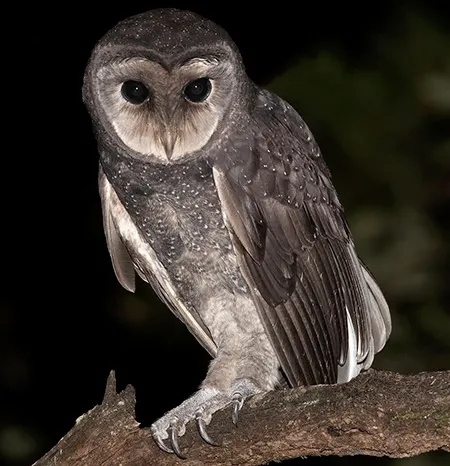
(Tyto tenebricosa)
Greater Sooty Owl
Сипуха темно-бура
It is found in south-eastern Australia, Montane rainforests of New Guinea and have been seen on Flinders Island in the Bass Strait. It occurs at elevations of 0–4,000 m.
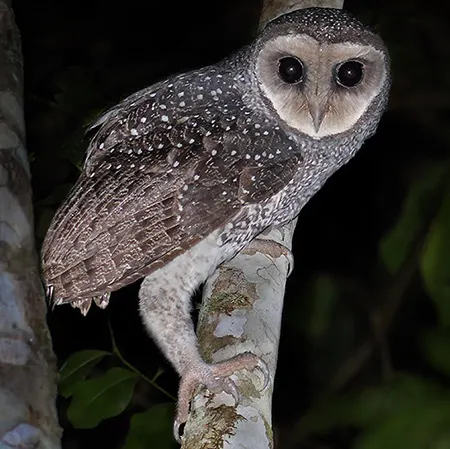
(Tyto multipunctata)
Lesser Sooty Owl
Сипуха срібляста
It is restricted to wet eucalyptus forests near the coast of north-eastern Queensland, Australia. It occurs at elevations of 0–300 m.

(Tyto almae)
Seram Masked Owl
Сипуха серамська
It is endemic to Seram Island in Indonesia. It occurs at elevations of 0–1,350 m.
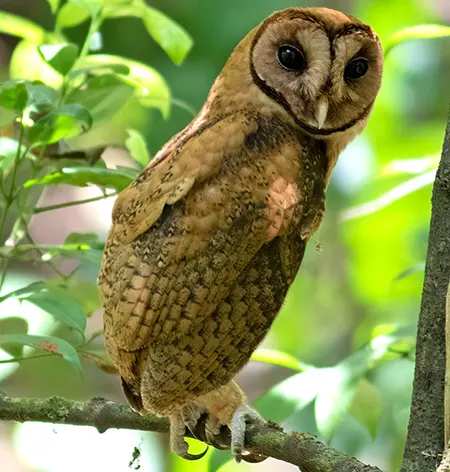
(Tyto inexspectata)
Minahasa Masked Owl
Сипуха мінагаська
It is endemic to the island of Sulawesi, Indonesia. It prefers undisturbed or lightly disturbed rainforest at elevations of 100–1,600 m.
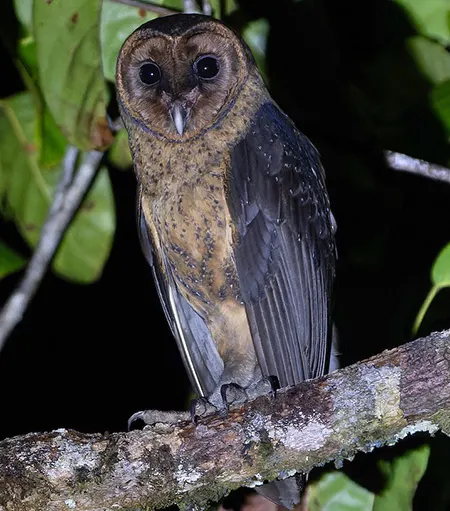
(Tyto nigrobrunnea)
Taliabu Masked Owl
Сипуха таліабуйська
It is endemic to Taliabu Island of Indonesia.

(Tyto sororcula)
Moluccan Masked Owl
Сипуха танімбарська
It is endemic to the southern Moluccas of Indonesia.
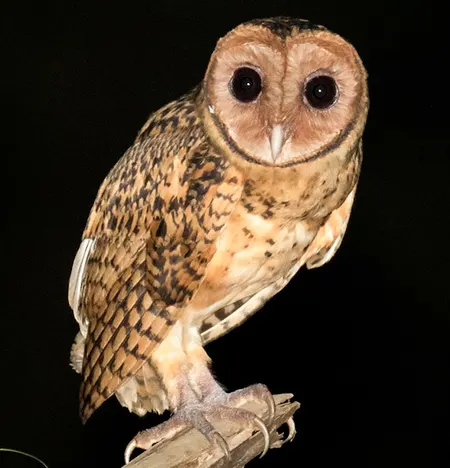
(Tyto aurantia)
Golden Masked Owl
Сипуха новобританська
It is endemic to the island of New Britain, Papua New Guinea.
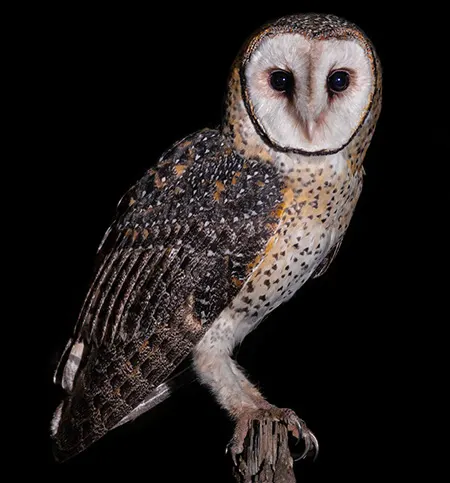
(Tyto novaehollandiae)
Australian Masked Owl
Сипуха австралійська
It is found in southern New Guinea, on the island of Tasmania and in the non-desert areas of Australia.
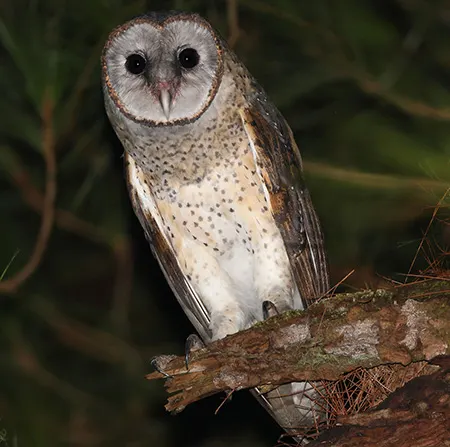
(Tyto rosenbergii)
Sulawesi Masked Owl
Сипуха сулавеська
It is endemic to the Indonesian islands of Sulawesi, Sangihe and Peleng.
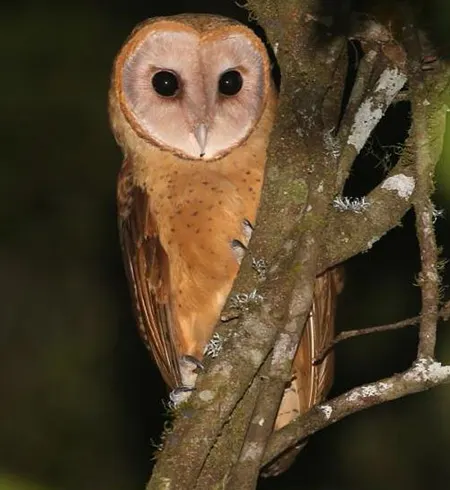
(Tyto soumagnei)
Madagascar Red Owl
Сипуха мадагаскарська
It is endemic to Madagascar, inhabiting tropical montane rainforests in the eastern part of the country. It also occurs occasionally in dry deciduous forests.
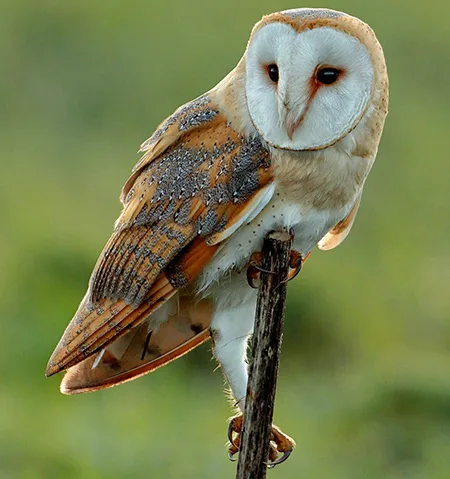
(Tyto alba)
Western Barn Owl
Сипуха крапчаста
Its range includes all of Europe (except Fennoscandia and Malta), most of Africa excluding the Sahara, and south-western Asia extending east to western Iran.
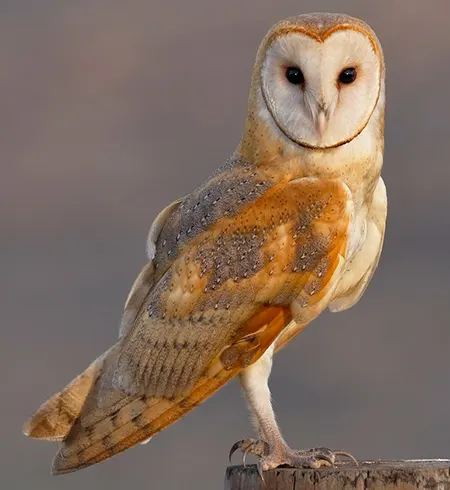
(Tyto furcata)
American Barn Owl
Сипуха американська
It is widespread across North and South America. It occurs from southern regions of Canada to southern Argentina and Chile. It inhabits a wide range of environments.
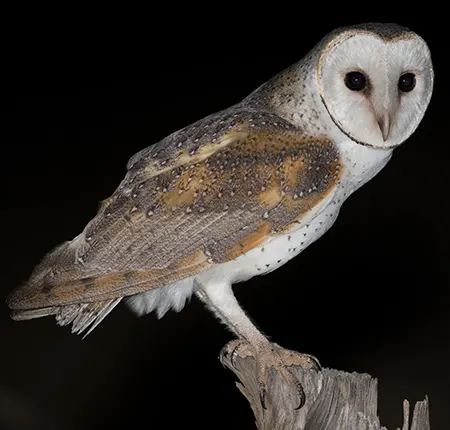
(Tyto javanica)
Eastern Barn Owl
Сипуха східна
It occurs on the Indian subcontinent, Southeast Asia, Australia, and many Pacific Islands. It is a bird of open country such as farmland or grassland with some interspersed woodland, usually at altitudes below 2,000 m.
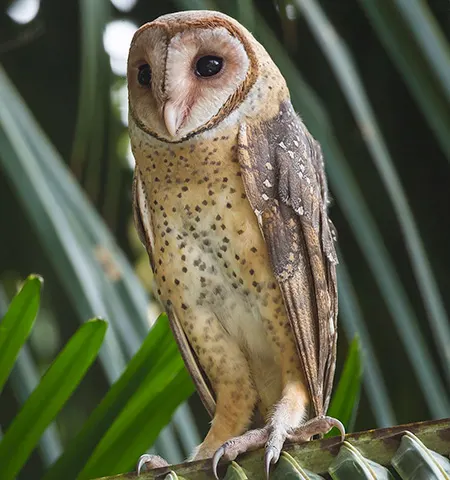
(Tyto deroepstorffi)
Andaman Masked Owl
Сипуха андаманська
It is endemic to the southern Andaman Islands archipelago of India. It occurs on the coastal plain, in fields and gardens with trees, and in human settlements.
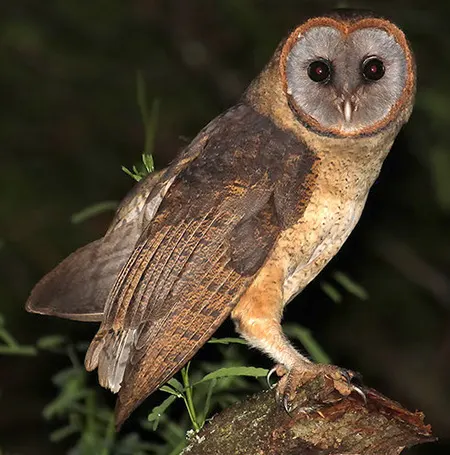
(Tyto glaucops)
Ashy-faced Owl
Сипуха гаїтянська
It is found on the island of Hispaniola, which is shared by the Dominican Republic and Haiti, and on Île de la Tortue of the north-western Haitian coast.

(Tyto capensis)
African Grass Owl
Сипуха африканська
It is distributed in sub-Saharan Africa, with two main range blocks: one in south-central Africa, and the other extending from the Western Cape north to the southern extremities of Zimbabwe, Botswana, and Mozambique. There are isolated populations in the Ethiopian Highlands, Kenya, Uganda and Cameroon.
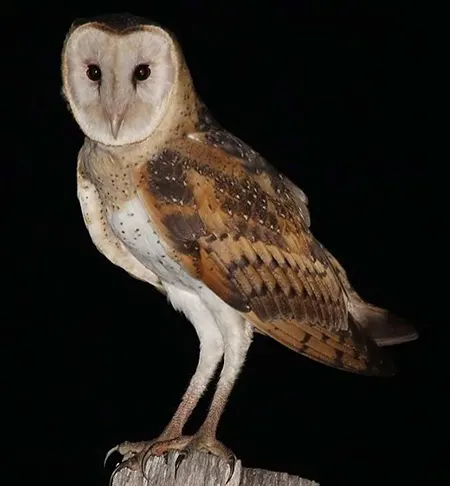
(Tyto longimembris)
Eastern Grass Owl
Сипуха довгонога
It lives in eastern, southern and southeast Asia, parts of New Guinea, the Philippines, Australia (mainly in Queensland) and the western Pacific.

(Tyto prigoginei)
Itombwe Owl
Ітомбвійська сова
It is endemic to the Itombwe Mountains in eastern Democratic Republic of the Congo.
The genus (Tyto) also includes: Manus Masked Owl (Tyto manusi) .
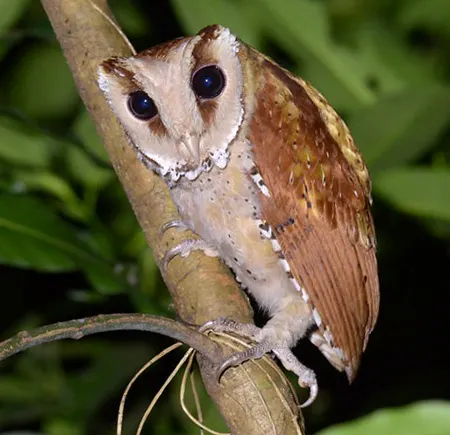
(Phodilus badius)
Oriental Bay Owl
Лехуза вухата
It is found throughout Nepal, north-eastern India, Myanmar and Thailand, east to south China, and south through the Malay Peninsula to the Greater Sundas. It inhabits woodland, plantations and mangrove swamps at altitudes of up to 2,200 m.

(Phodilus assimilis)
Sri Lanka Bay Owl
Лехуза цейлонська
It is endemic to the island of Sri Lanka and the Western Ghats in Kerala, South Western India.

